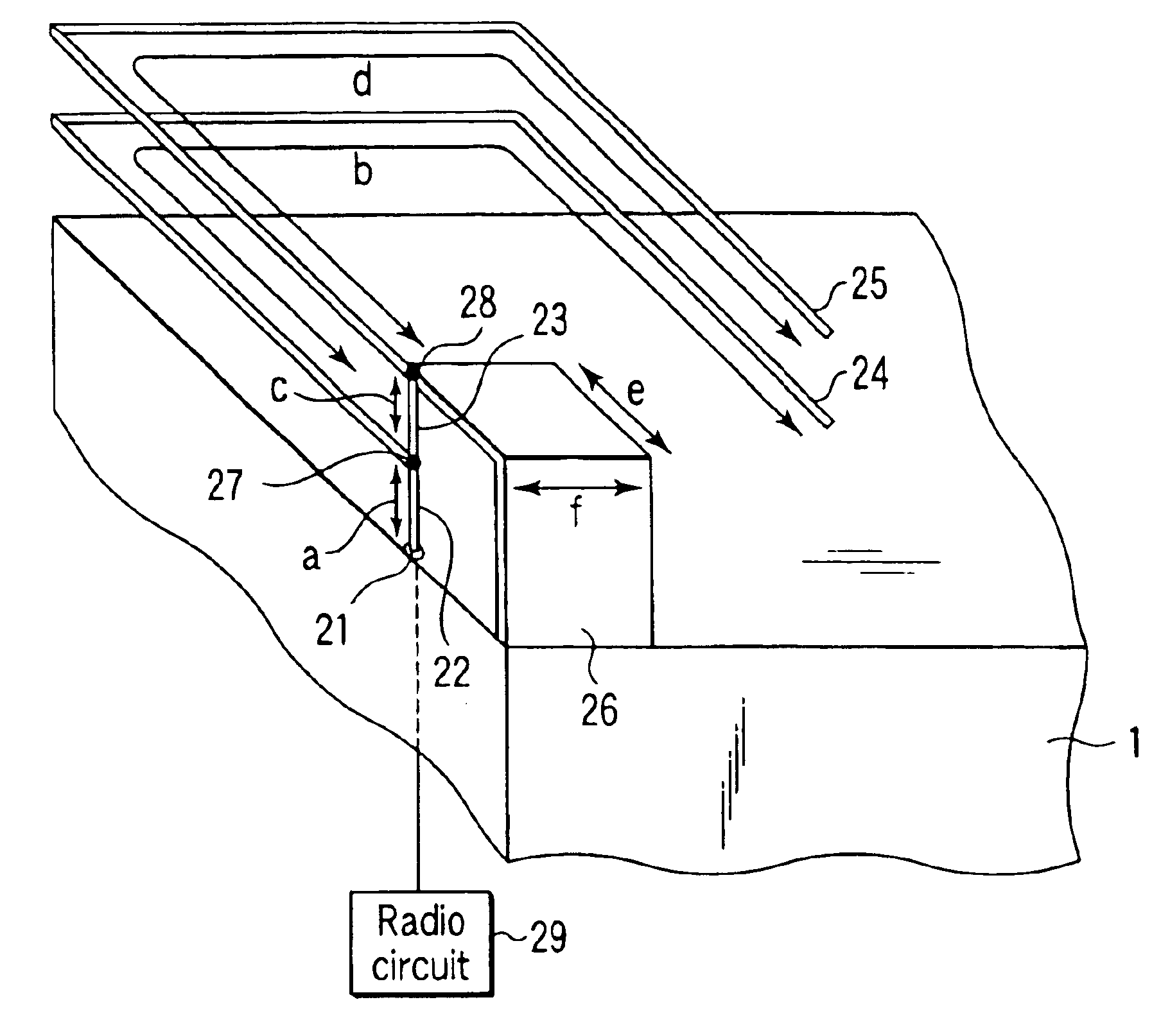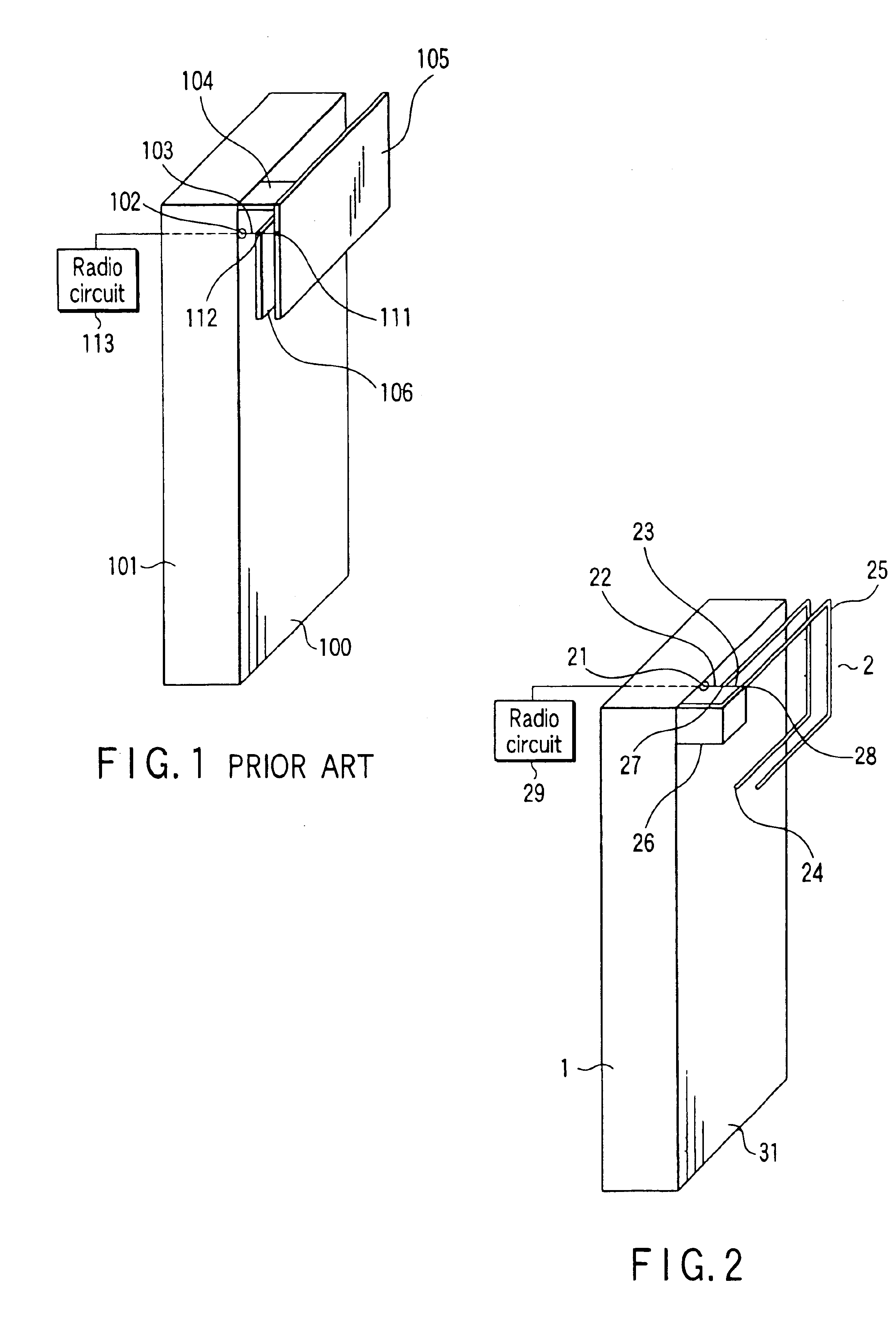Antenna apparatus
- Summary
- Abstract
- Description
- Claims
- Application Information
AI Technical Summary
Benefits of technology
Problems solved by technology
Method used
Image
Examples
first embodiment
(First Embodiment)
[0063]FIG. 2 shows an arrangement of an antenna 2 according to the first embodiment of the present invention.
[0064]The antenna 2 according to the first embodiment is installed in a square internal housing 1 formed from a ground conductor inside an external housing made of an insulator such as a plastic in a wireless communication device. A surface on which the antenna 2 of the housing 1 is mounted will be called a ground plane 31. The antenna 2 exchanges signals with a wireless device via a feed point 21 on the housing 1 so as not to electrically connect the antenna 2 and ground plane 31.
[0065]The shape and size of the housing 1 are not particularly limited and can be arbitrarily designed. The feed point 21 can be set at an arbitrary position on the housing 1. In FIG. 2, the feed point 21 is set at the end of the ground plane 31 of the housing 1. However, the following effects can be obtained by adjustment regardless of where the feed point 21 is set on the housing...
second embodiment
(Second Embodiment)
[0152]An antenna formed from a ribbon-like antenna element with the same antenna principle according to the present invention described in the first embodiment will be explained as the second embodiment.
[0153]In general, an antenna uses a ribbon-like antenna element in order to ensure the mechanical strength and reduce the cost. The antenna of the present invention can also adopt a ribbon-like antenna element.
[0154]FIG. 19 shows the arrangement of an antenna according to the second embodiment of the present invention. FIG. 19 also shows the parameters a to f of respective antenna elements in an antenna 2 when each antenna element of the antenna is a ribbon-like antenna element.
[0155]As shown in FIG. 19, linear antenna elements used for this antenna are ribbon-like antenna elements in the second embodiment, whereas these linear antenna elements are wire antenna elements in the antenna 2 according to the first embodiment. The ribbon antenna elements have widths, unl...
third embodiment
(Third Embodiment)
[0171]The antenna 2 shown in FIG. 3 according to the first embodiment has a transmission / reception bandwidth whose lower and upper limit frequencies are 840 MHz and 880 MHz, as shown in FIG. 12B. However, some of devices which comprise the antenna 2 require a wider transmission / reception bandwidth and must reduce upward directivity of radiation from an antenna element parallel to the ground plane. To satisfy these conditions, the gist of the third embodiment is to widen the frequency band and improve the radiation directivity.
[0172]The third embodiment will exemplify an antenna 200 obtained by adding another pair of wire antenna elements parallel to a ground plane that correspond to the third and fourth wire antenna elements 24 and 25 in FIG. 2.
[0173]FIG. 20 shows an arrangement of the antenna 200 according to the third embodiment. The antenna 200 is mounted on a ground conductor (ground plane) 201. Signals are transmitted between, e.g., a wireless device and the a...
PUM
 Login to View More
Login to View More Abstract
Description
Claims
Application Information
 Login to View More
Login to View More - R&D
- Intellectual Property
- Life Sciences
- Materials
- Tech Scout
- Unparalleled Data Quality
- Higher Quality Content
- 60% Fewer Hallucinations
Browse by: Latest US Patents, China's latest patents, Technical Efficacy Thesaurus, Application Domain, Technology Topic, Popular Technical Reports.
© 2025 PatSnap. All rights reserved.Legal|Privacy policy|Modern Slavery Act Transparency Statement|Sitemap|About US| Contact US: help@patsnap.com



